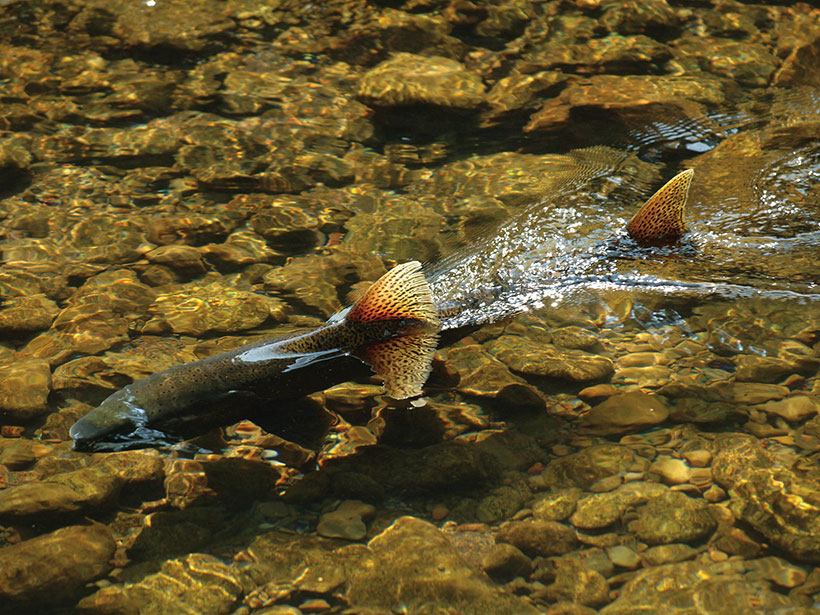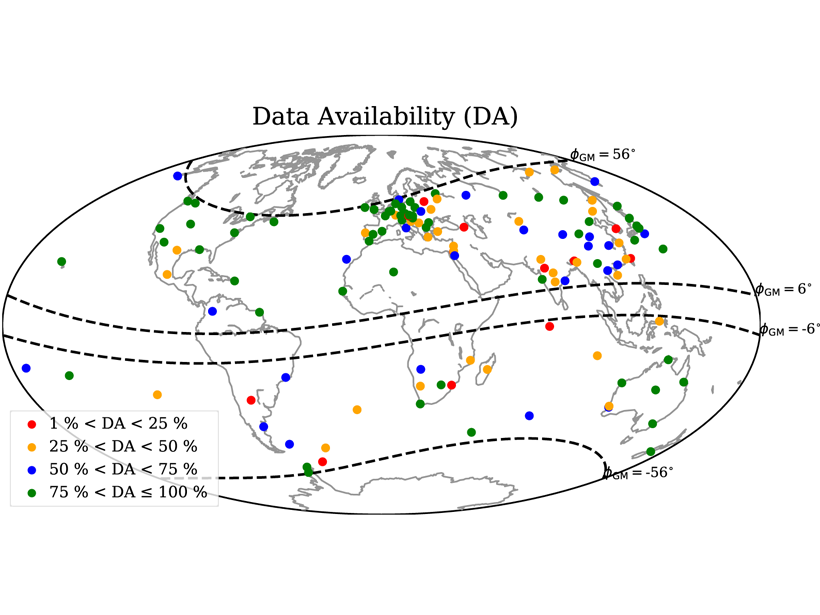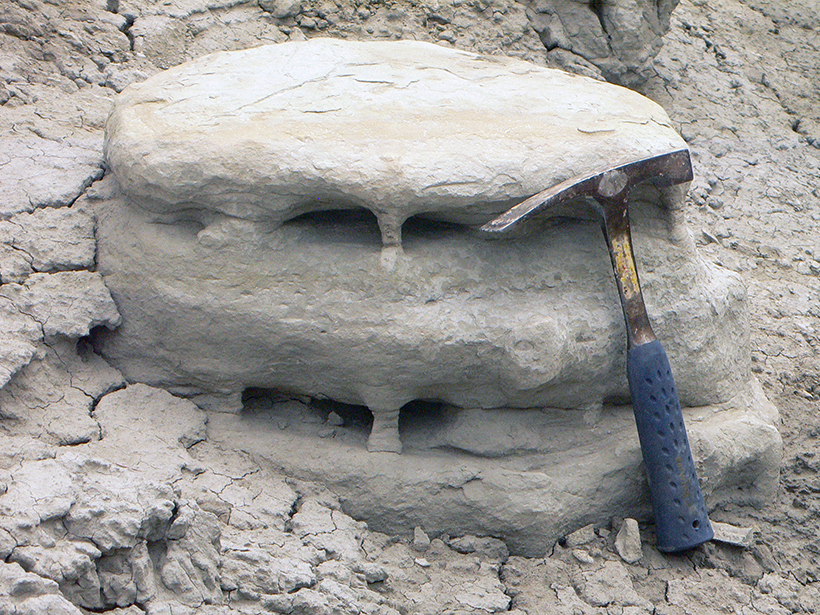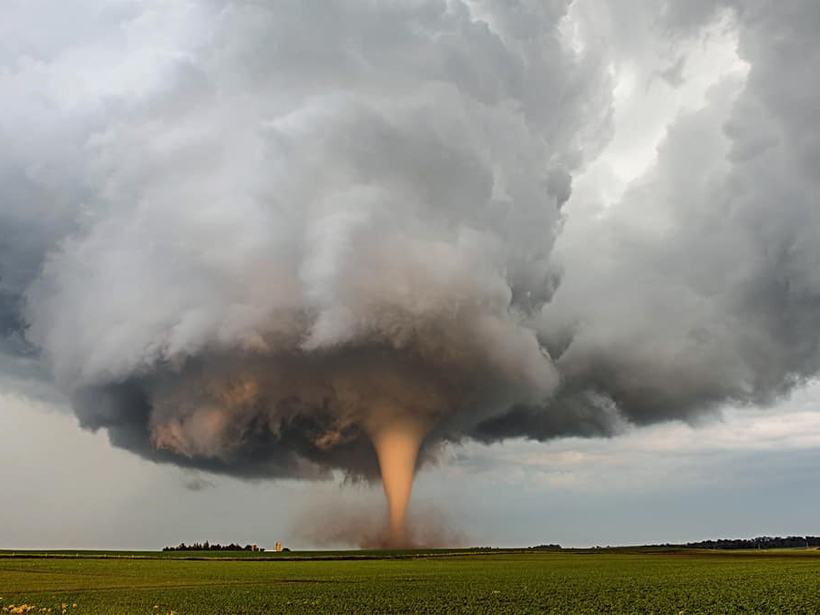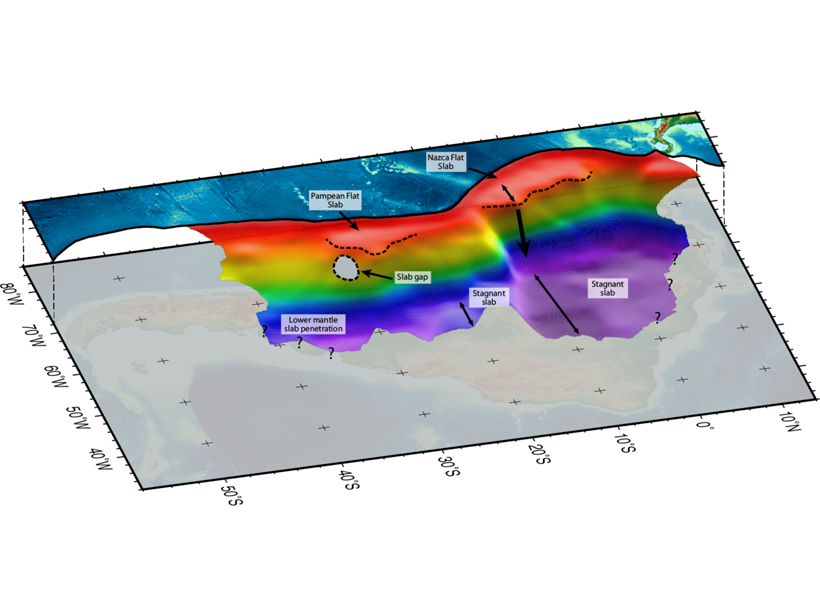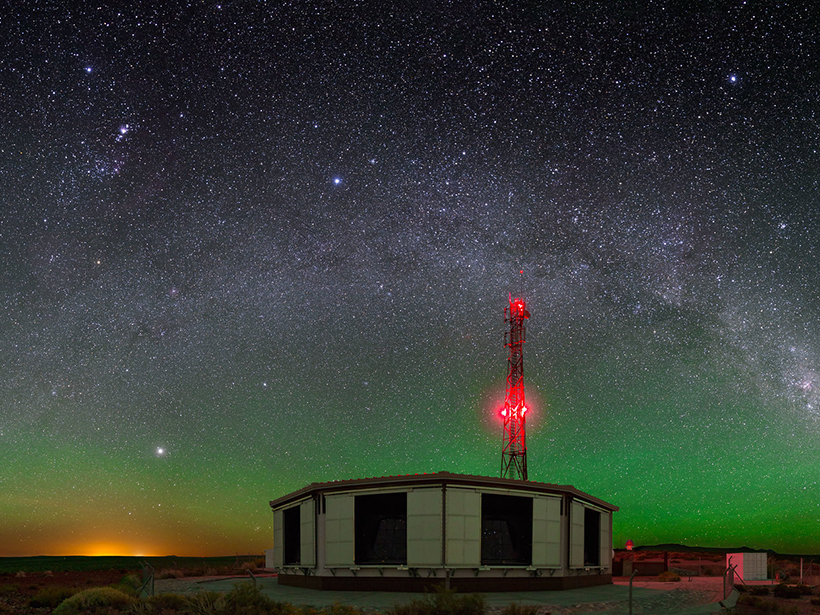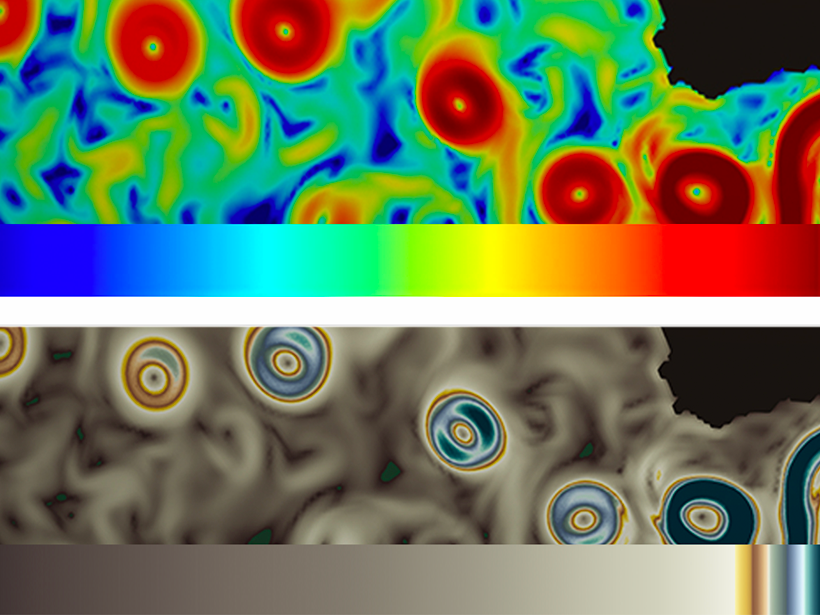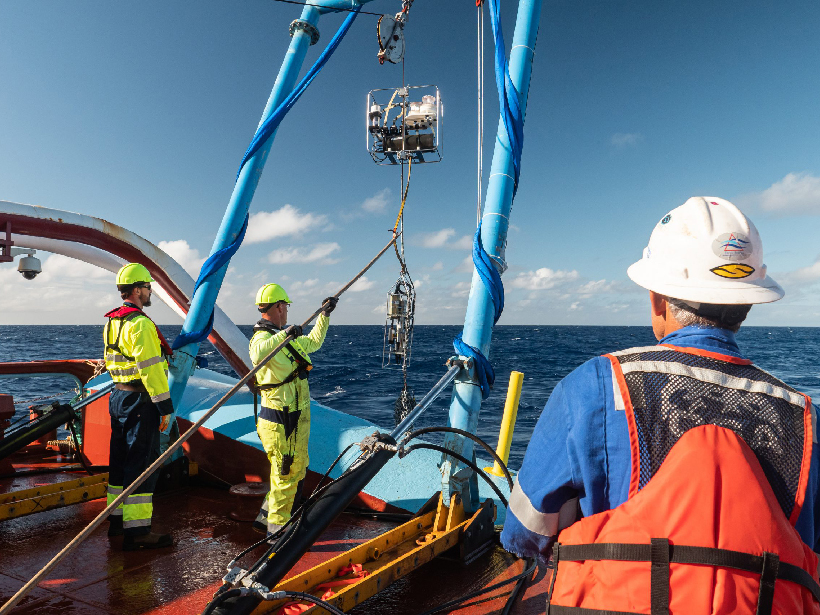New study finds evidence that magnetite particles play a role in fish navigation.
CC BY-NC-ND 2020
Globally Variable Water Content in the Mantle Transition Zone
Using electromagnetic waves originating in the ionosphere and magnetosphere, conductivity profiles reaching the deep upper mantle show surprising variability in water content.
Oceanic Changes Correlate with Methane Seepage
Changes in sea level and organic carbon burial may have affected seafloor methane seepage over the past 150 million years.
Bridging the Gap Between Weather and Climate Predictions
A special collection on subseasonal-to-seasonal prediction presents the latest progress in filling the gap between short-term weather prediction and longer-term climate prediction.
The Other, Deeper, South American Flat Slab
Tomographers trace the slab subducting beneath South America into the lower mantle, providing the most complete picture of structure beneath the continent to date.
Catching Elves in Argentina
The world’s largest cosmic ray detector accidentally spotted elves, an unusual lightning phenomenon high in the atmosphere. Now it’s intentionally looking for more.
Sunburned Surface Reveals Asteroid Formation and Orbital Secrets
Thanks to spectacular high-resolution images from Hayabusa2, scientists can now better estimate how and when the asteroid Ryugu formed, how its orbit has changed over time, and what its surface looks like.
This Week: The Best of Eos
As we head into the second half of 2020, we take a look back on our favorite stories of the year so far.
#GeoGRExit: Why Geosciences Programs Are Dropping the GRE
Geoscience graduate programs are increasingly abandoning the controversial test as an admissions requirement, a welcome development for equity and inclusion in the field. How can your school be next?
Below the Great Pacific Garbage Patch: More Garbage
New research is finding there’s more to marine debris than just what appears near the ocean surface, including tons of microplastics extending hundreds of meters into the deep.

